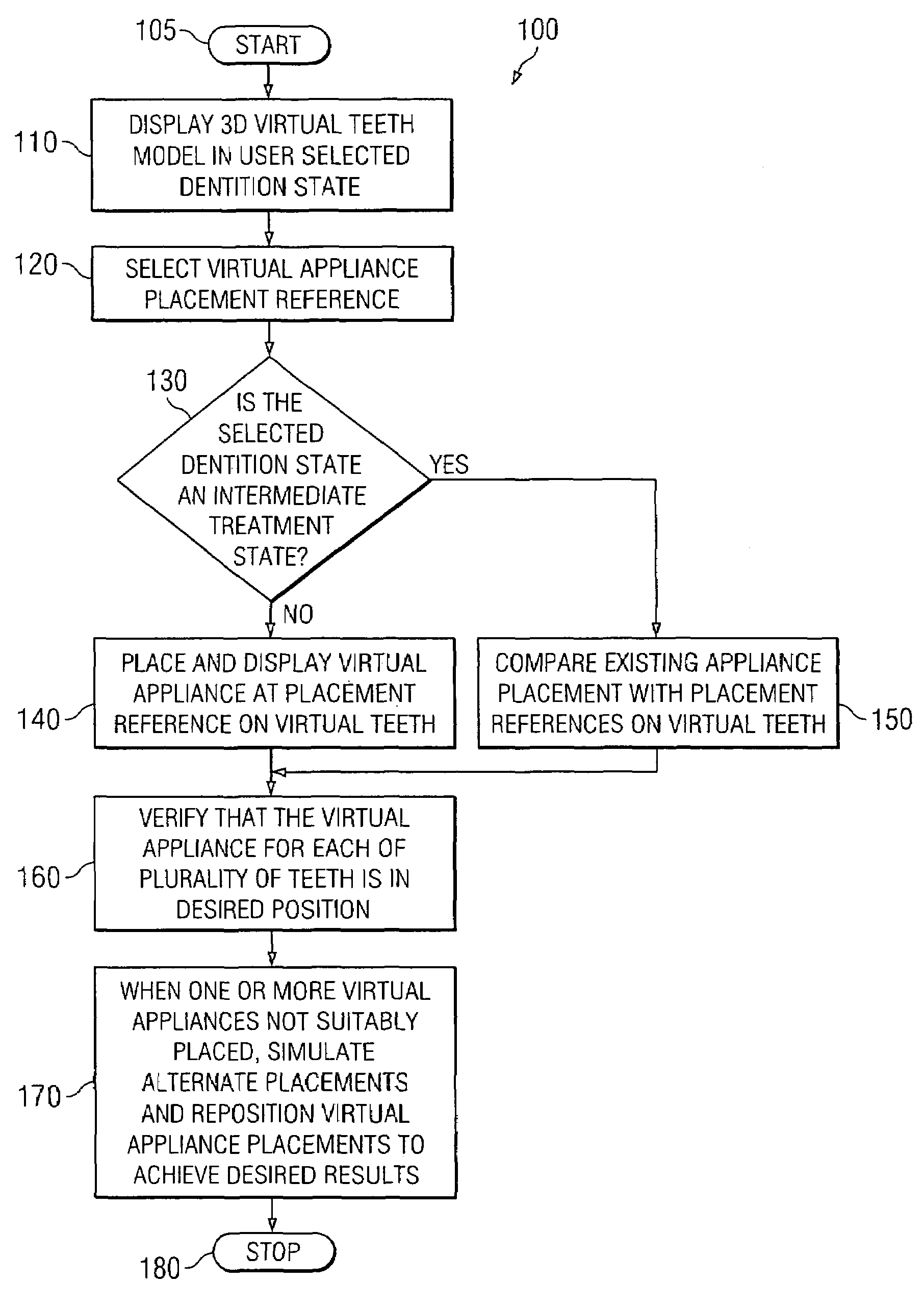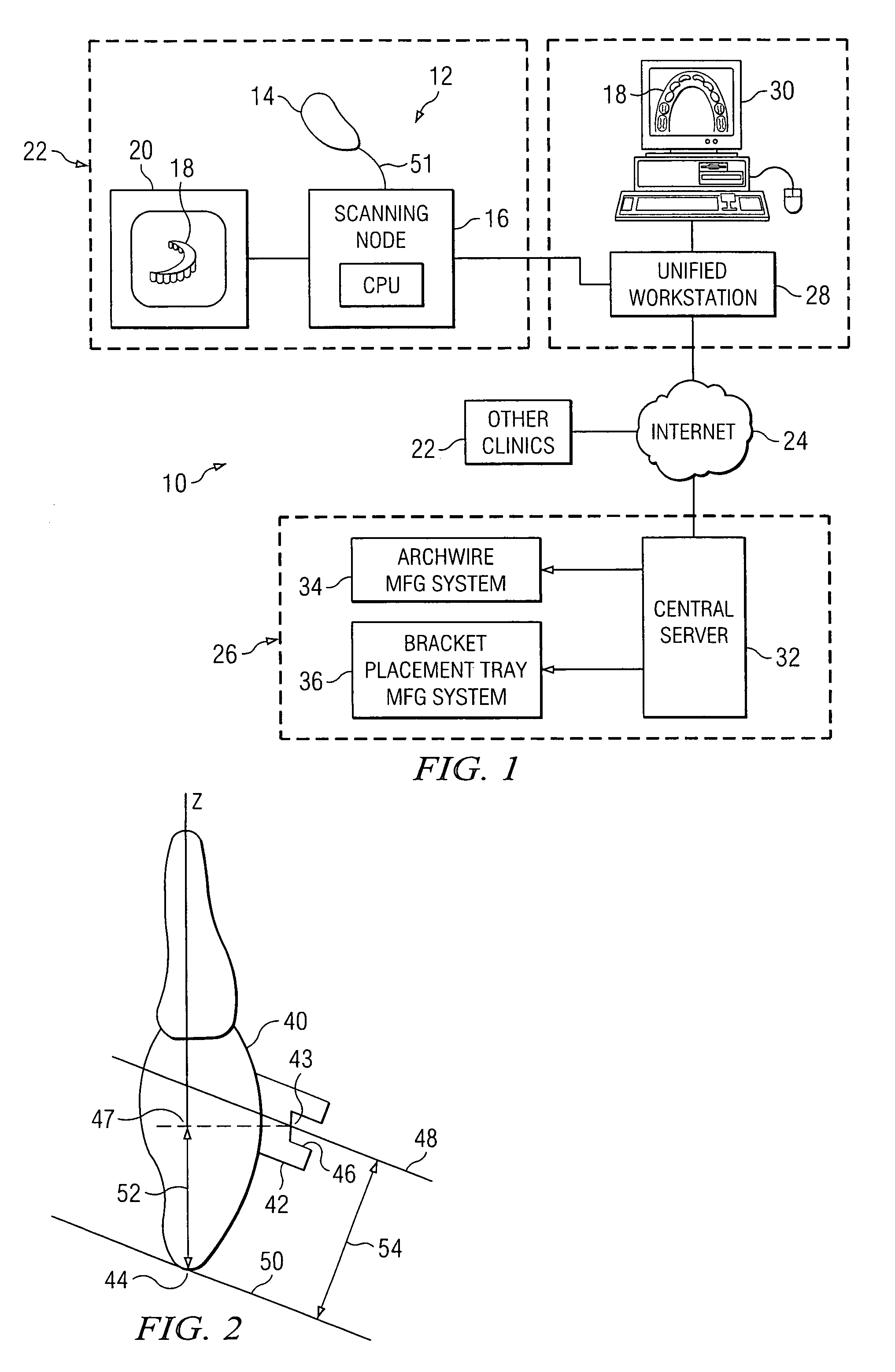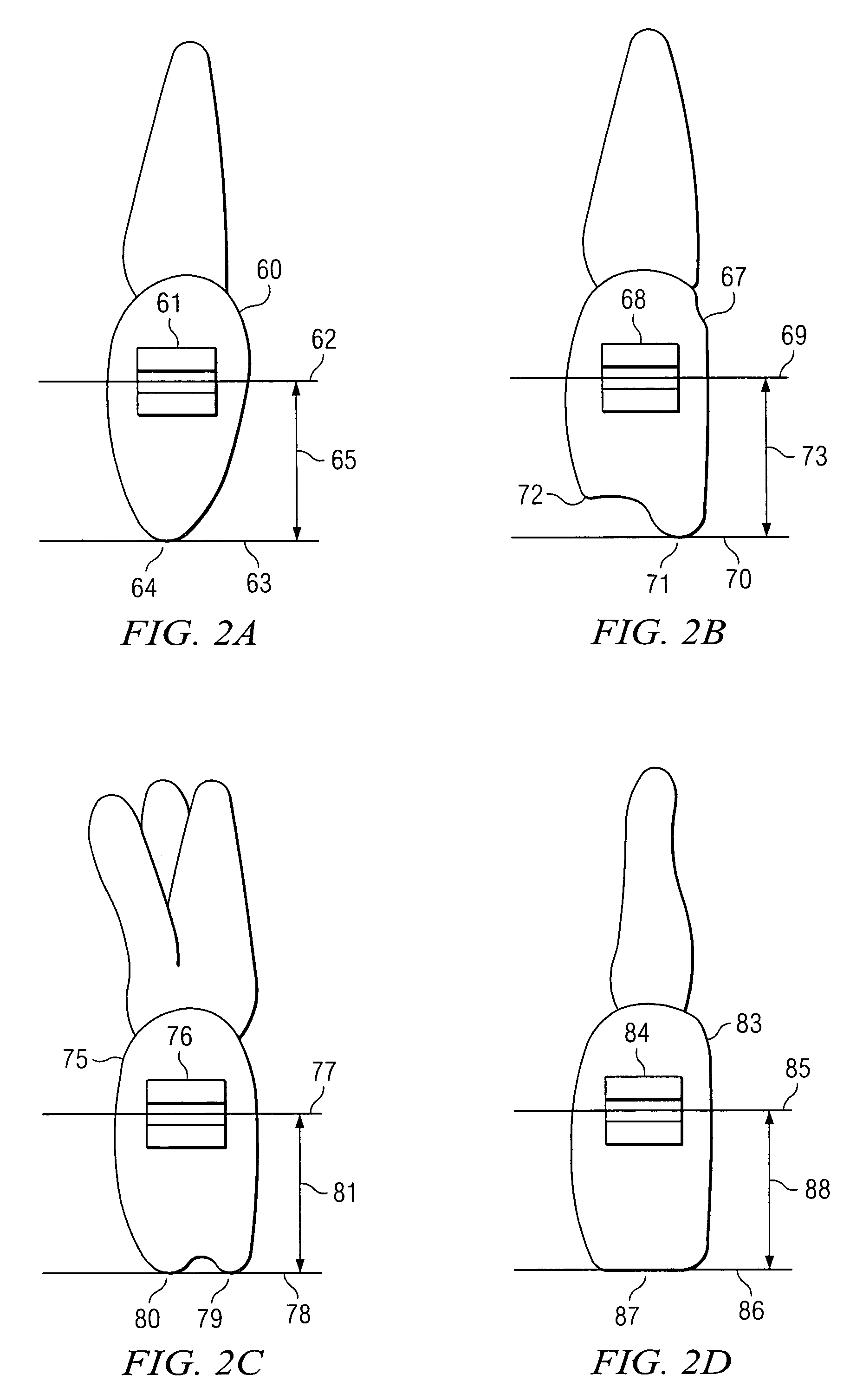Virtual bracket placement and evaluation
a virtual bracket and placement technology, applied in the field of virtual bracket placement and evaluation, can solve the problems of human error, human inability to determine the ideal location of the bracket, and extremely difficult to manually place the bracket in the estimated ideal location, so as to improve accuracy and consistency.
- Summary
- Abstract
- Description
- Claims
- Application Information
AI Technical Summary
Benefits of technology
Problems solved by technology
Method used
Image
Examples
Embodiment Construction
[0055]The present invention provides a method and apparatus for facilitating placement and evaluation of virtual appliances, such as virtual brackets, on virtual teeth of an orthodontic patient. The invention provides user selectable positioning references to facilitate initial automatic placement of virtual appliances on virtual teeth model. The appliance placement references can be used by a practitioner or a user in accordance with the practitioner's preferences and enable taking into account anatomical properties and features of patient's teeth while planning treatment. Once the virtual appliances are placed on the virtual teeth using the placement references a easy to use capability is provided for making adjustment of the virtual appliance placement. This invention enables proper planning of treatment for orthodontic patients. For an orthodontic patient suffering from a malocclusion treated by bonding brackets to the surface of the patient's teeth and placing archwires in the ...
PUM
 Login to View More
Login to View More Abstract
Description
Claims
Application Information
 Login to View More
Login to View More - R&D
- Intellectual Property
- Life Sciences
- Materials
- Tech Scout
- Unparalleled Data Quality
- Higher Quality Content
- 60% Fewer Hallucinations
Browse by: Latest US Patents, China's latest patents, Technical Efficacy Thesaurus, Application Domain, Technology Topic, Popular Technical Reports.
© 2025 PatSnap. All rights reserved.Legal|Privacy policy|Modern Slavery Act Transparency Statement|Sitemap|About US| Contact US: help@patsnap.com



